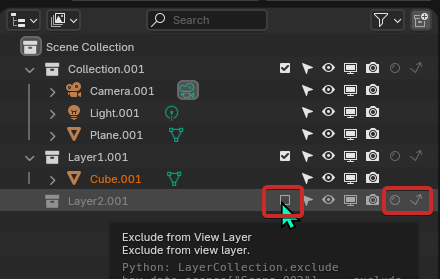So I created a very large scene and was hoping I could get it to render by strategizing how to turn certain objects off in the render when they are too far away to be of consequence or obscured (like interior of a building when the scene is outside of it) My plan was to have different blend files for different buildings and components, then link those into another blend file which will be the full scene. then to actually make the scene do a linked copy and add my cameras and animations there, set the render range in that scene, and change which objects were included in the render vs not. then go on to the next part of the scene in another location, different range to render, different render exclusions etc. But apparently that doesn't work...if I uncheck the show in render in one scene it unchecks it in the other. I don't want to duplicate the scene for obvious reasons. I thought of a separate blender file and linking the entire scene and setting up overrides but it wasn't letting me change the render status. Is there any way to achieve what I'm hoping to achieve here? Or those way better at this than I am...how do you manage things like this? Would render layers help somehow?
The whole scene is majorly taxing both my 13th gen i9/64GBRam/RTX4080 machine and my M2 max macbook pro with 96GB unified. they can render, but only with great difficulty. I have already been careful with simplified geometry, camera culling, texture size limiting etc.


